
Class Setup
Onsite / Face-to-Face
Duration
Sessions: 2 Days
Time: 9:00am – 7:00pm (20 Hrs)
Actual Servers
Only center that uses actual rack mount servers per student (No sharing of servers)
Unlimited Sit-ins
Finish the course and get unlimited refresher classes (Validity: 1 year)
Class Setup
Onsite / Face-to-Face
Duration
Sessions: 3 Days
Time: 9:00am – 7:00pm (30 Hours)
Coverage
Basic, Intermediate to Advance
Unlimited Sit-ins
Finish the course and get unlimited refresher classes (Validity: 1 year)
Health Protocols
- Masks Required
- Physical Distance Maintained
- Temperature Check at Entrance
- Event Area Sanitized
- Vaccination Required
Overview
The Microsoft Windows Server 2012 Administering Server Training will provide students with hands-on experience in administering and Managing Active Directory for day-to-day operations. At Course Completion, students are expected to learn the following key functions stated below.
- Implement and configure Active Directory
- Create and Manage Active Directory and Group Policy objects
- Manage permissions through Group Policy
- Manage backup & replication
- Secure Active Directory
- and more…
Prerequisite
Before attending this course, students must have:
- Experienced in Installing and Configuring Windows Server (2012, 2016)
- Solid understanding of basic networking wired and wireless or networking fundamentals.
- Basic Computer knowledge and Skills in PC or Mac.
- Basic knowledge in computer hardware
Inclusions
- Certificate of Course Completion
- References Materials (PDF)
- Software Evaluation Copy
- Exam Reviewer
- Other Add-ons
What you'll Learn
Module 1: Configuring and Troubleshooting Domain Name System
This module explains how to configure and troubleshoot DNS, including DNS replication and caching.
Lessons
- Configuring the DNS Server Role
- Configuring DNS Zones
- Configuring DNS Zone Transfers
- Managing and Troubleshooting DNS
Lab: Configuring and Troubleshooting DNS
After completing this module, students will be able to:
- Install and configure the DNS server role.
- Create and configure DNS zones.
- Configure DNS zone transfers.
- Manage and troubleshoot DNS.
Module 2: Maintaining Active Directory Domain Services
This module explains how to implement virtualized domain controllers and read-only domain controller (RODCs). It also explains how to perform common AD DS administrative tasks and manage the AD DS Database.
Lessons
- Overview of AD DS
- Implementing Virtualized Domain Controllers
- Implementing RODCs
- Administering AD DS
- Managing the AD DS Database
Lab: Maintaining AD DS
After completing this module, students will be able to:
- Implement virtualized domain controllers.
- Implement RODCs.
- Implement AD DS.
- Manage the AD DS database
Module 3: Managing User and Service Accounts
This module explains how to create, configure and automate the creation of user accounts. It also explains how to configure account-related properties of user objects. It further explains how to create and administer Managed Service Accounts.
Lessons
- Configuring Password Policy and User Account Lockout Settings
- Configuring Managed Service Accounts
Lab: Managing User and Service Accounts
After completing this module, students will be able to:
- Configure password policy and user account lockout settings.
- Configure managed service accounts.
Module 4: Implementing a Group Policy Infrastructure
This module explains how to implement a GPO infrastructure. This also teaches how to perform common GPO management tasks, and manage GPOs by using Windows PowerShell. It also focuses on troubleshooting the application of GPOs.
Lessons
- Introducing Group Policy
- Implementing and Administering GPOs
- Group Policy Scope and Group Policy Processing
- Troubleshooting the Application of GPOs
Lab: Implementing a Group Policy Infrastructure
After completing this module, students will be able to:
- Explain what Group Policy is.
- Implement and administer Group Policy Objects (GPOs).
- Manage Group Policy scope and Group Policy processing.
- Troubleshoot the application of GPOs.
Module 5: Managing User Desktops with Group Policy
This module explains how you can use Group Policy Objects (GPOs) to implement desktop environments across your organization by using Administrative Templates, Folder Redirection, Group Policy preferences, and where applicable, use software deployment to install and update application programs. It is important to know how to use these various GPO features so that you can configure your users’ computer settings properly.
Lessons
- Implementing Administrative Templates
- Configuring Folder Redirection and Scripts
- Configuring Group Policy Preferences
- Managing Software with Group Policy
Lab: Managing User Desktops with Group Policy
After completing this module, students will be able to:
- Configure folder redirection and scripts by using GPOs.
- Describe and implement Administrative Templates.
- Configure GPO preferences.
- Deploy software by using GPOs.
Module 6: Installing, Configuring, and Troubleshooting the Network Policy Server Role
This module explains how to install and configure NPS, RADIUS Clients and servers. It also describes NPS authentication methods. It describe NPS authentication methods and how to monitor and troubleshoot NPS.
Lessons
- Installing and Configuring a Network Policy Server
- Configuring RADIUS Clients and Servers
- NPS Authentication Methods
- Monitoring and Troubleshooting a Network Policy Server
Lab: Installing and Configuring a Network Policy Server
After completing this module, students will be able to:
- Install and configure a Network Policy Server (NPS).
- Configure clients and servers with the Remote Authentication Dial-In User Service (RADIUS) protocol.
- Explain NPS authentication methods..
- Monitor and troubleshoot NPS.
Module 7: Implementing Network Access Protection
This module explains how to configure, monitor, and troubleshoot NAP. It also explains how NAP can help to protect your network and the various NAP enforcement processes.
Lessons
- Overview of Network Access Protection
- Overview of NAP Enforcement Processes
- Configuring NAP
- Configuring IPSec Enforcement for NAP
- Monitoring and Troubleshooting NAP
Lab: Implementing Network Access Protection
After completing this module, students will be able to:
- Describe how NAP can help to protect your network.
- Describe the various NAP enforcement processes.
- Configure NAP
- Monitor and troubleshoot NAP.
Module 8: Implementing Remote Access
In this module, you will learn how to implement and manage remote access in Windows Server 2012. You will also learn how to implement Direct Access by using the Getting Started wizard, implement and manage an advanced Direct Access infrastructure, and implement VPN.
Lessons
- Overview of Remote Access
- Implementing Direct Access by Using the Getting Started Wizard
- Implementing and Managing an Advanced Direct Access Infrastructure
- Implementing VPN
- Implementing Web Application Proxy
Lab: Implementing Direct Access by Using the Getting Started Wizard
Lab: Deploying an Advanced Direct Access Solution
Lab: Implementing VPN
Lab: Implementing Web Application Proxy
After completing this module, students will be able to:
- Install and manage the Remote Access role in Windows Server 2012 operating system.
- Implement Direct Access by using the Getting Started Wizard.
- Implement and manage an advanced Direct Access Infrastructure.
- Implement VPN access.
- Implement Web Application Proxy.
Module 9: Optimizing File Services
This module describes FSRM, configure quotas, file screening, and storage reports and implement classification management and file management tasks. It describes the components of the DFS. I also explains how to configure DFS namespaces and DFS replication.
Lessons
- Overview of FSRM
- Using FSRM to Manage Quotas, File Screens, and Storage Reports
- Implementing Classification and File Management Tasks
- Overview of DFS
- Configuring DFS Namespaces
- Configuring and Troubleshooting DFS Replication
Lab: Configuring Quotas and File Screening Using File Server Resource Manager
Lab: Implementing Distributed File System
After completing this module, students will be able to:
- Describe the File Server Resource Manager (FSRM) in the Windows Server 2012 operating system.
- Use FSRM to manage quotas, file screens, and storage reports.
- Implement classification and file management tasks.
- Describe Distributed File System (DFS).
- Configure DFS namespaces.
- Configure and troubleshoot DFS Replication.
Module 10: Configuring Encryption and Advanced Auditing
This module explains how to encrypt files using EFS and configure advanced auditing features.
Lessons
- Encrypting Drives by Using BitLocker
- Encrypting Files by Using EFS
- Configuring Advanced Auditing
Lab: Configuring Encryption and Advanced Auditing
After completing this module, students will be able to:
- Secure data by using BitLocker Drive Encryption.
- Encrypt files by using Encrypting File System (EFS).
- Configure advanced auditing.
Module 11: Deploying and Maintaining Server Images
This module explains how to create and manage server images by using Windows Deployment Services
Lessons
- Overview of Windows Deployment Services
- Managing Images
- Implementing Deployment with Windows Deployment Services
- Administering Windows Deployment Services
Lab: Using Windows Deployment Services to Deploy Windows Server 2012
After completing this module, students will be able to:
- Describe the important features and functionality of Windows Deployment Services (Windows DS).
- Manage images by using Windows Assessment and Deployment Kit (Windows ADK) Tools.
- Configure Windows Deployment Services in Windows Server 2012.
- Perform deployments with Windows Deployment Services.
Module 12: Implementing Update Management
This module explains how to use Windows Server Update Services (WSUS) to deploy updates to Windows servers and clients.
Lessons
- Overview of WSUS
- Deploying Updates with WSUS
Lab: Implementing Update Management
After completing this module, students will be able to:
- Describe the role of WSUS.
- Describe the WSUS update management process.
- Deploy updates with WSUS.
Module 13: Monitoring Windows Server 2012
This module explains the monitoring tools available in Windows Server 2012. it also explains how to use Performance Monitor and monitor events.
Lessons
- Monitoring Tools
- Using Performance Monitor
- Monitoring Event Logs
Lab: Monitoring Windows Server 2012
After completing this module, students will be able to:
- Describe the monitoring tools for the Windows Server 2012 operating system.
- Use Performance Monitor to view and analyze performance statistics of programs that are running on their servers.
- Monitor event logs to view and interpret the recorded events.
Registration
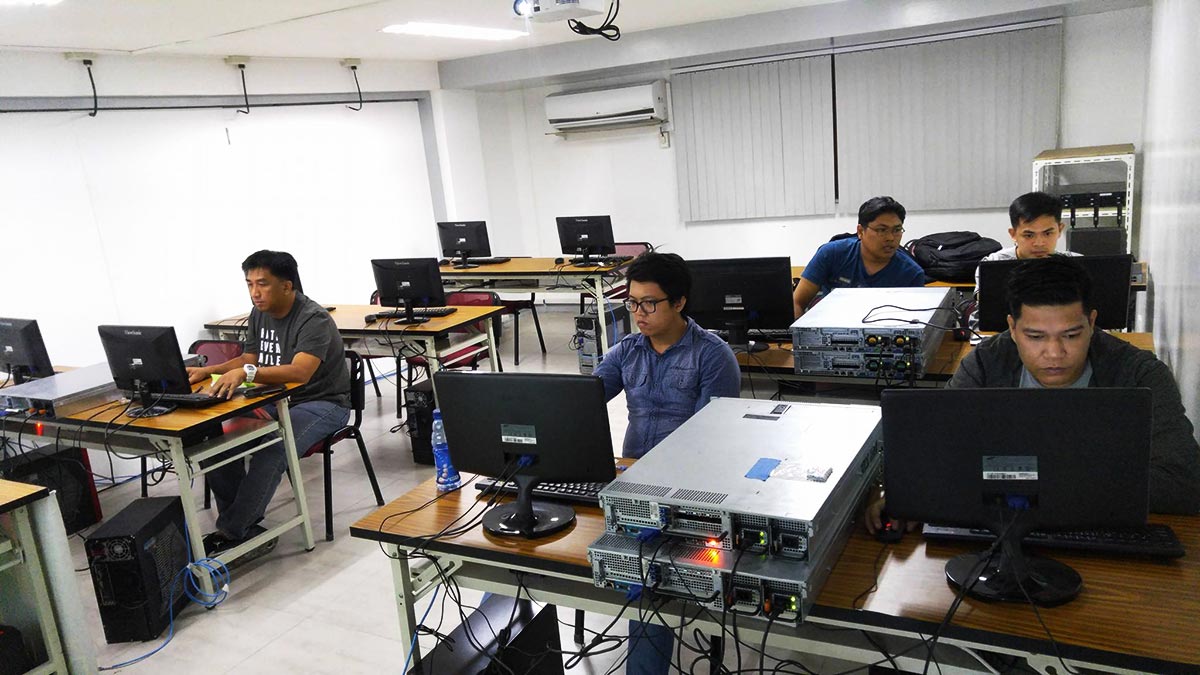
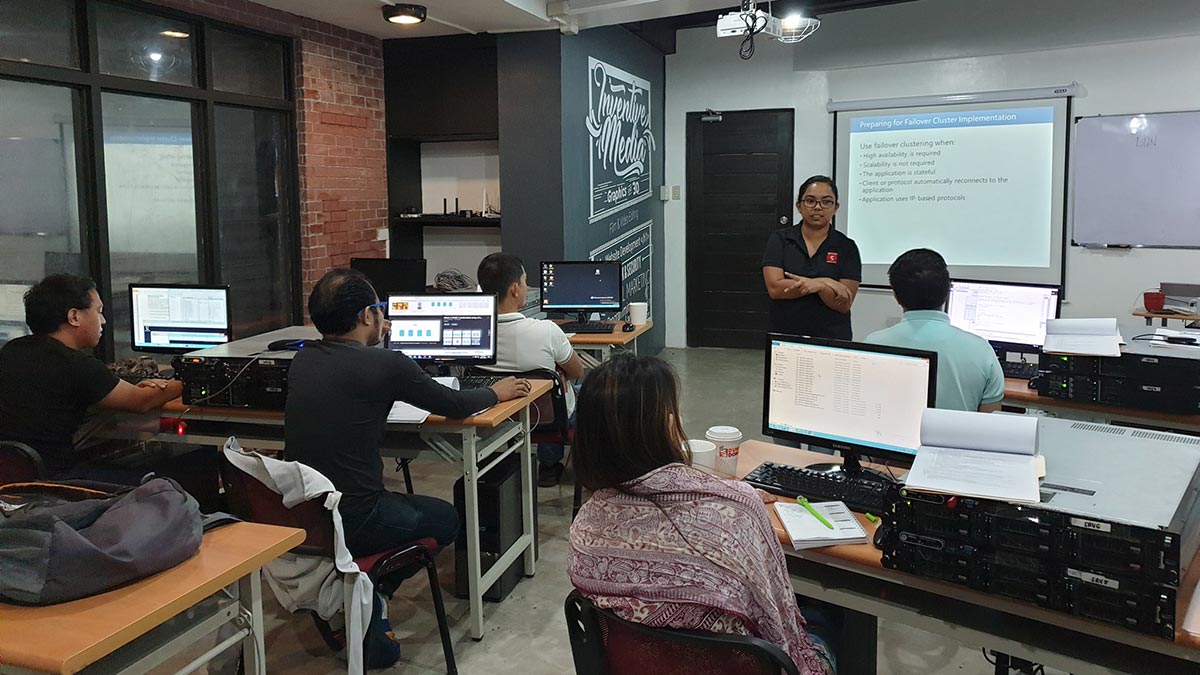
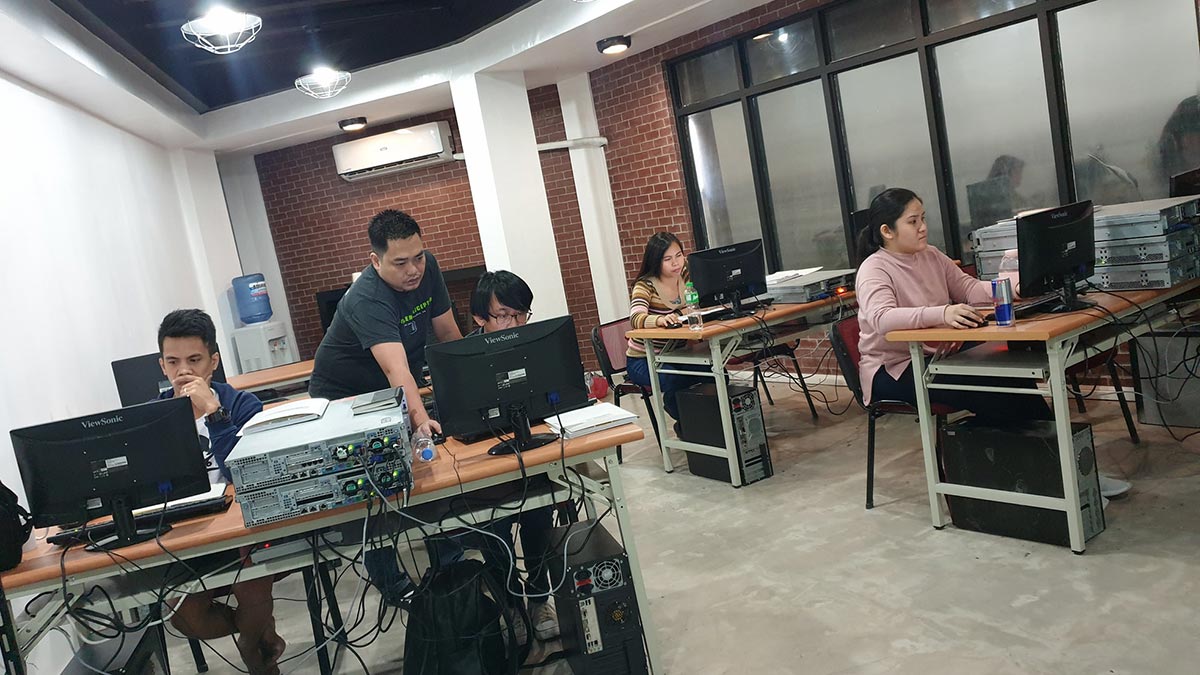
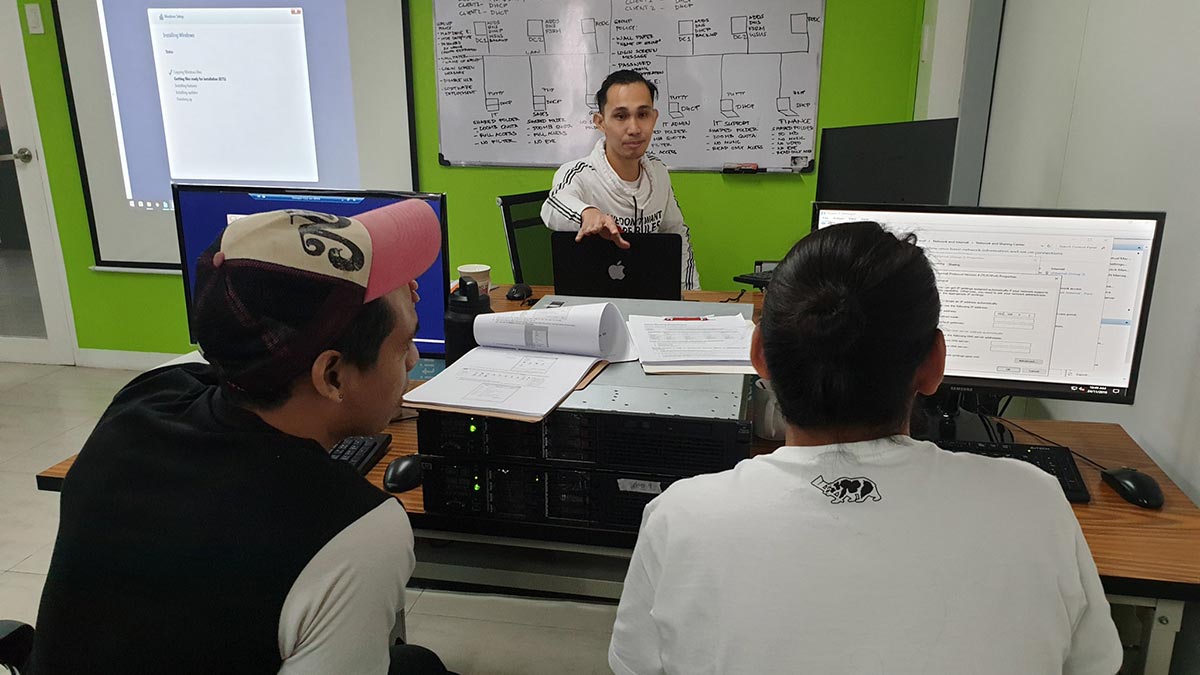
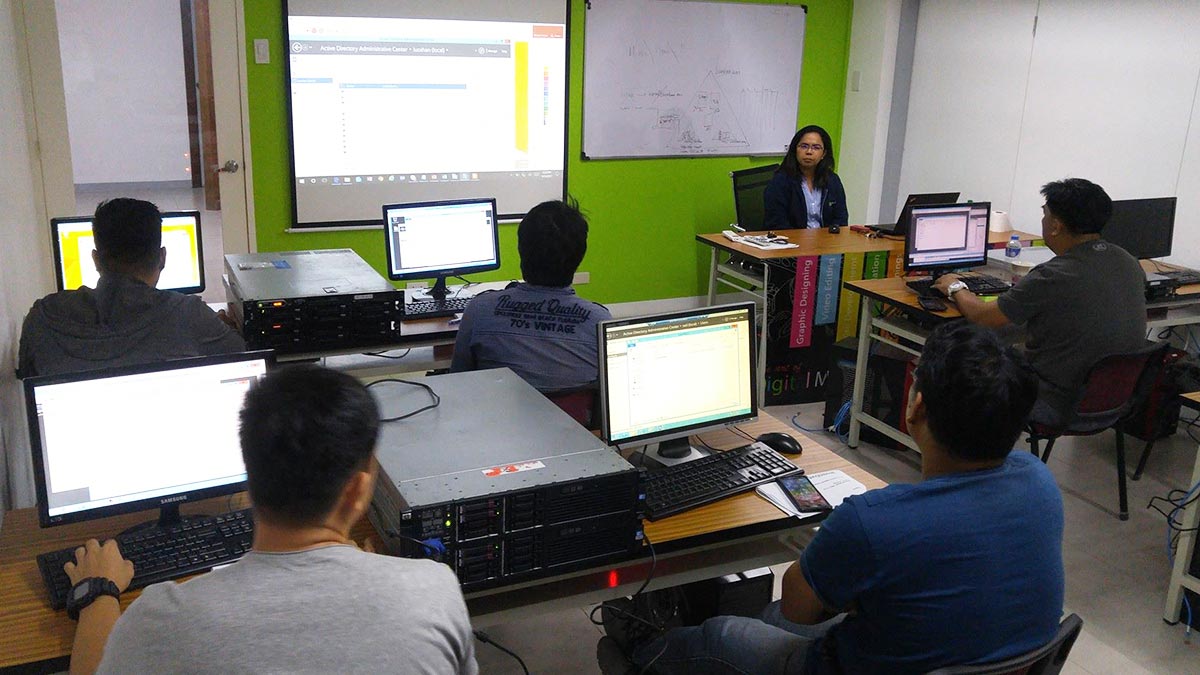
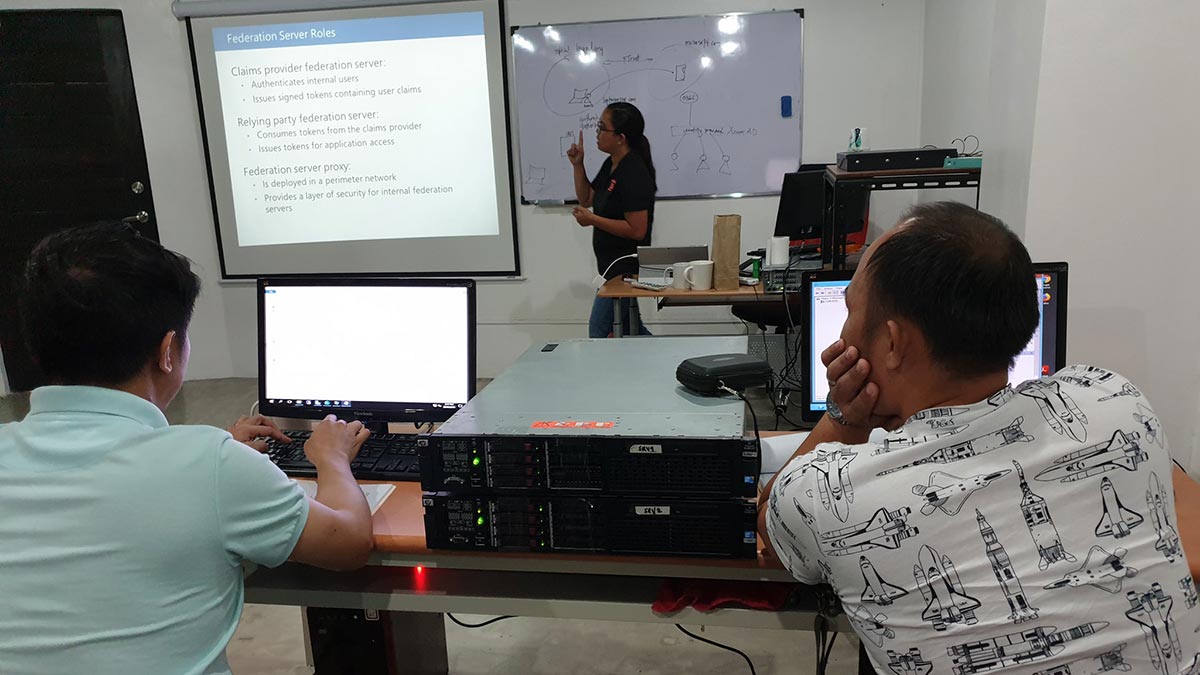
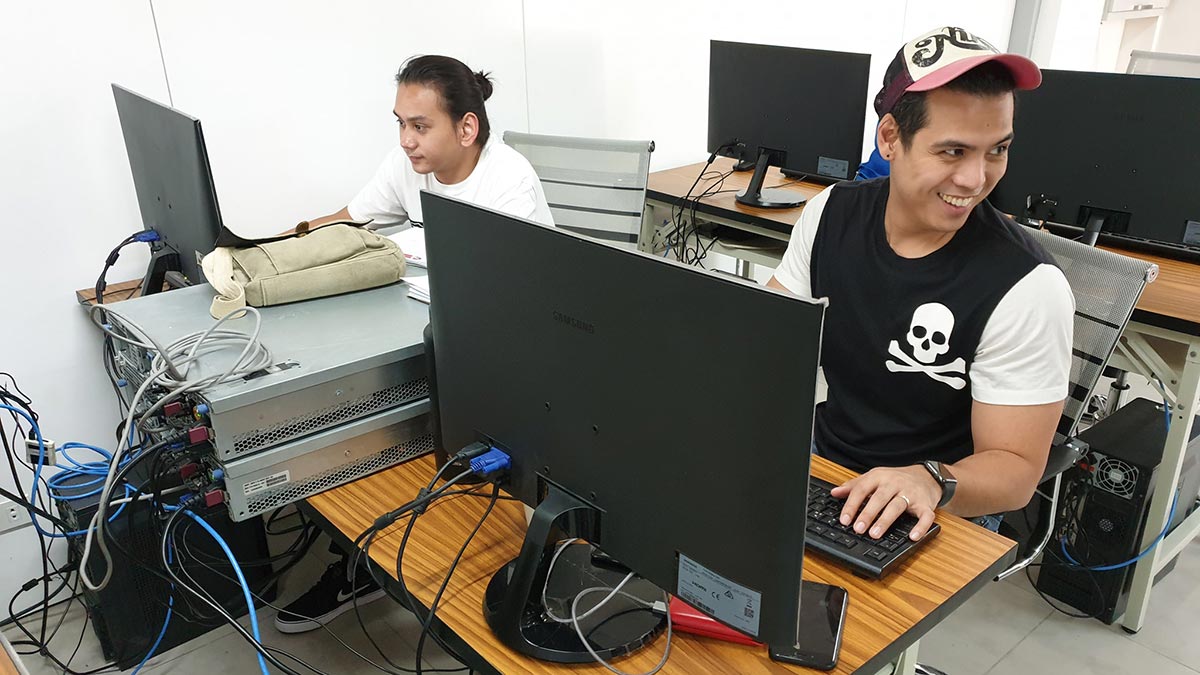
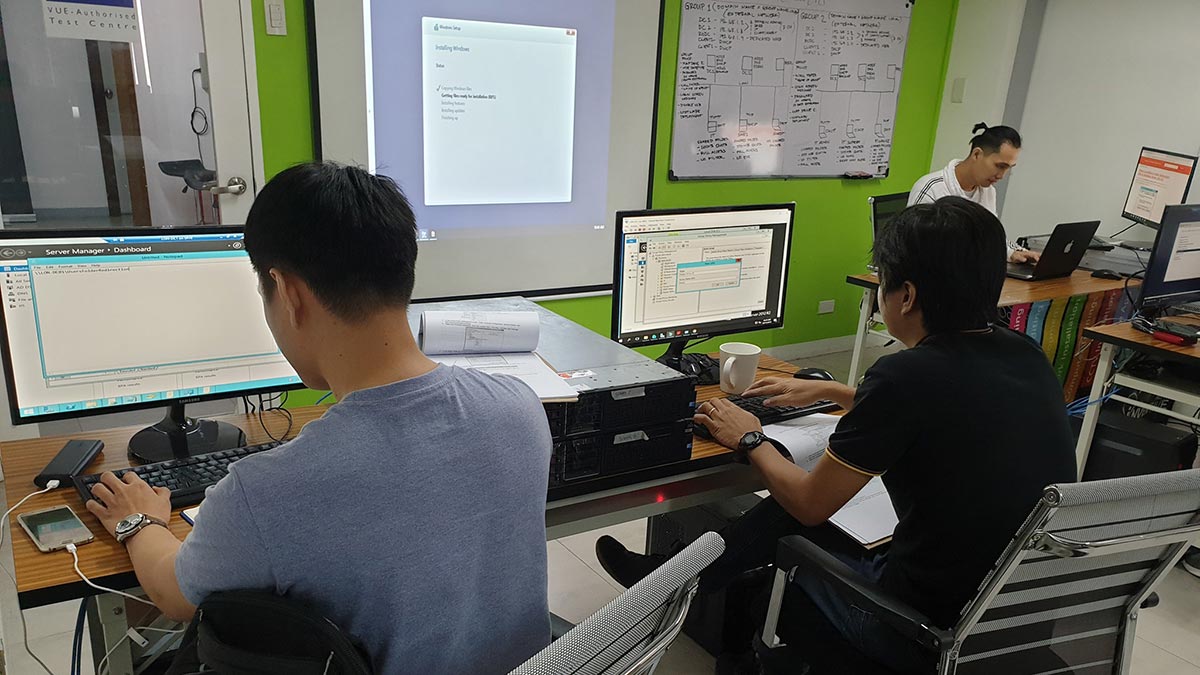
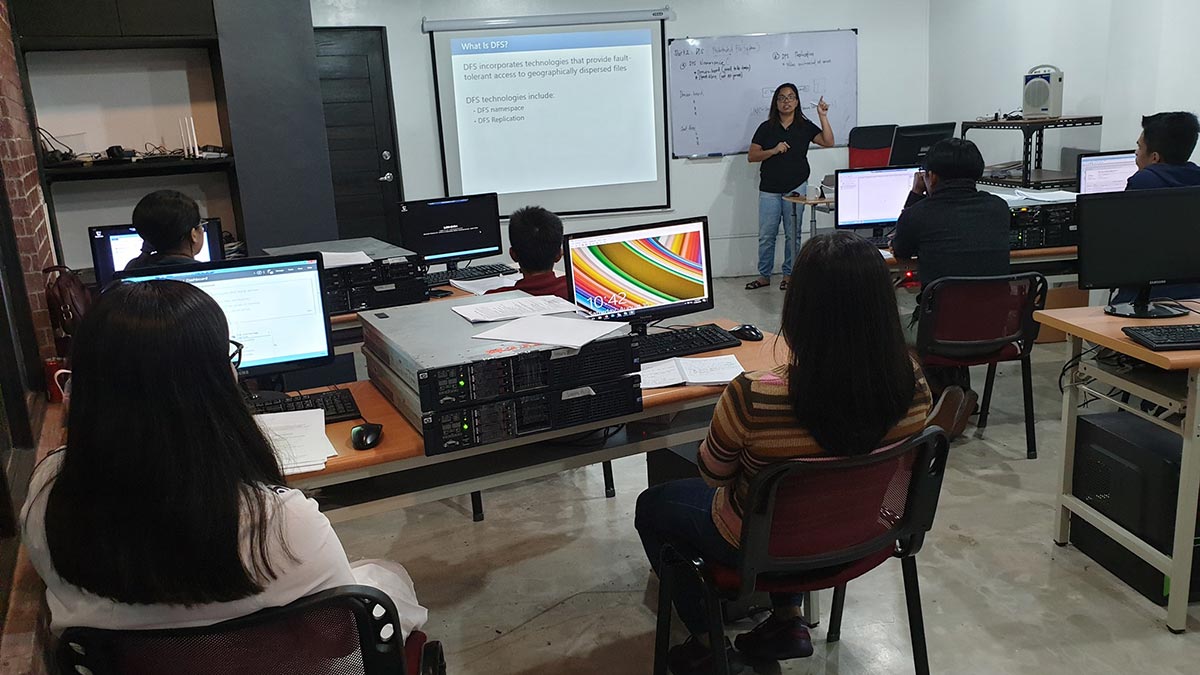
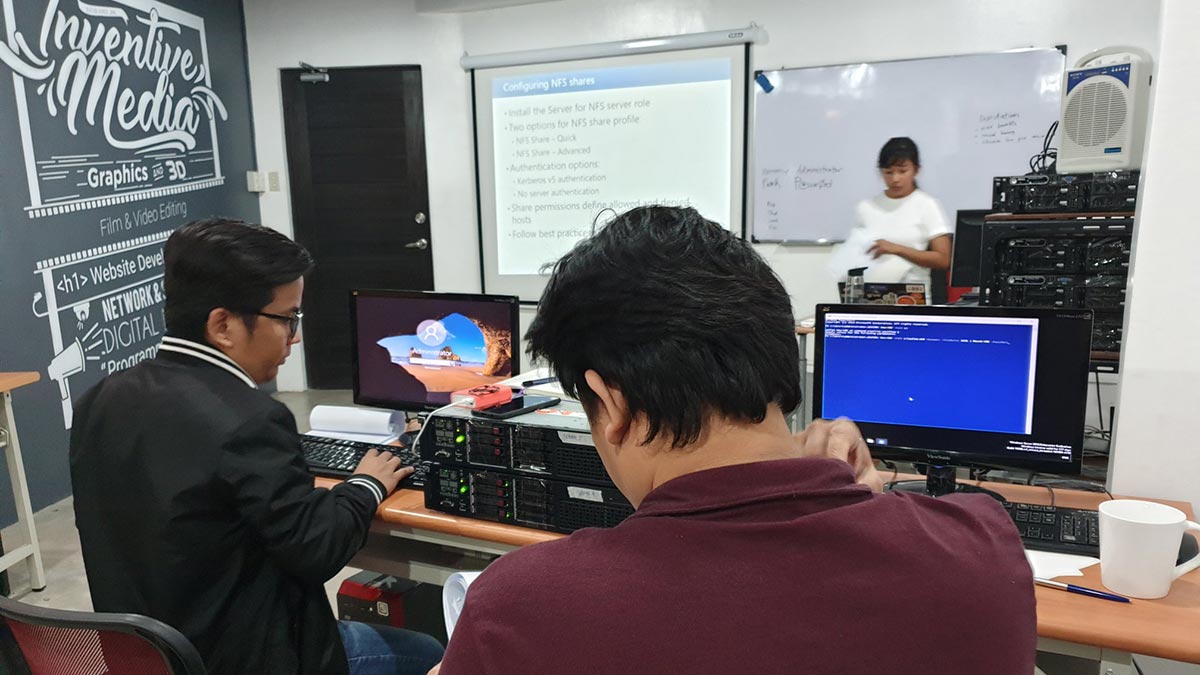
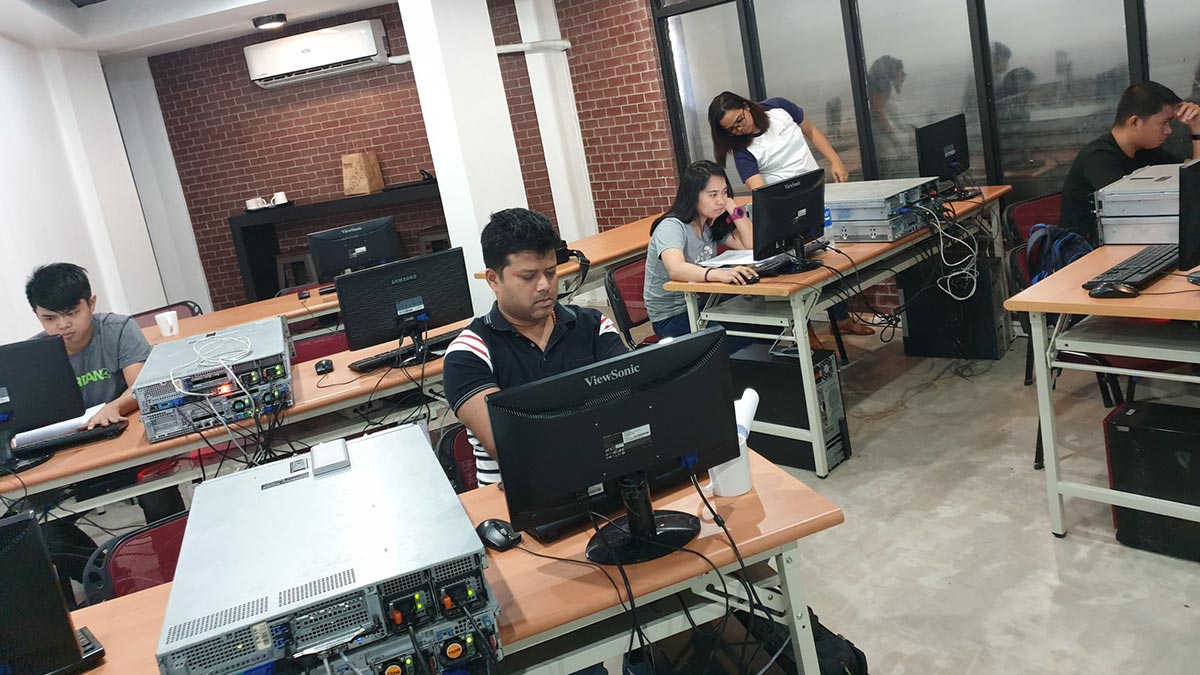
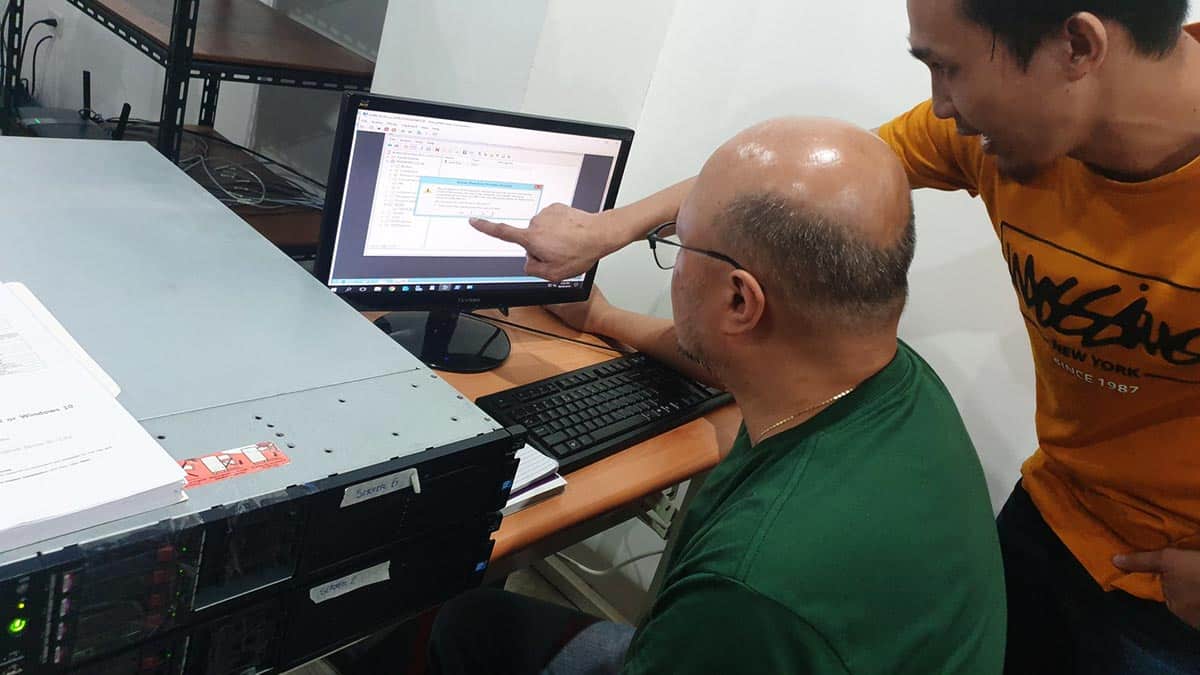
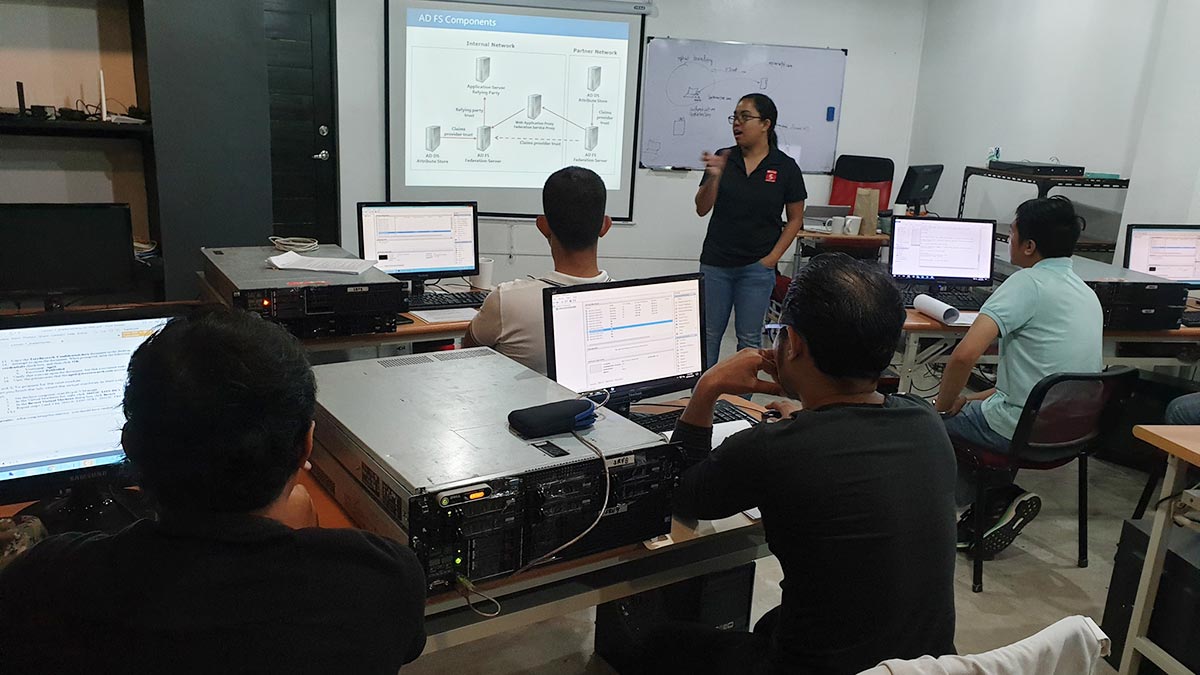
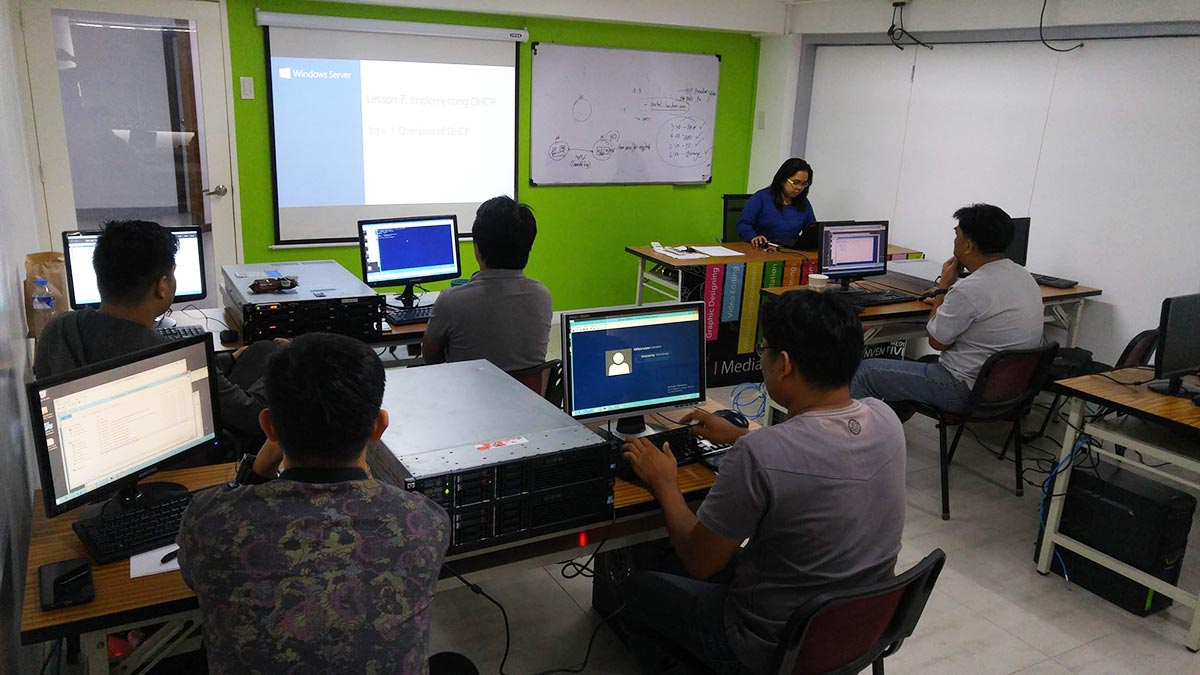

Use of Actual Rack Servers during Training
Single Course Promo
| Onsite | Face-to-Face Class | ||
| Microsoft Windows Server 2012 R2 - Administering Windows Server (70-411) | ||
| Regular Fee | New Student Discount | Discounted Fee |
| ₱10,000 | ₱1,000 less | ₱9,000 |
| Regular Fee | Alumni Discount | Discounted Fee |
| ₱10,000 | ₱1,500 less | ₱8,500 |
Course Packages Promo
| Onsite | Face-to-Face Class | ||
| Windows Server 2012 MCSA Installation and Configuring (70-410) Administering Windows Server (70-411) Configuring Advanced Windows Server (70-412) 3 Course Package |
||
| Regular Fee | Package Discount | Discounted Fee |
| ₱30,000 | ₱6,000 less | ₱24,000 |
Schedules
april 2025
may 2025













